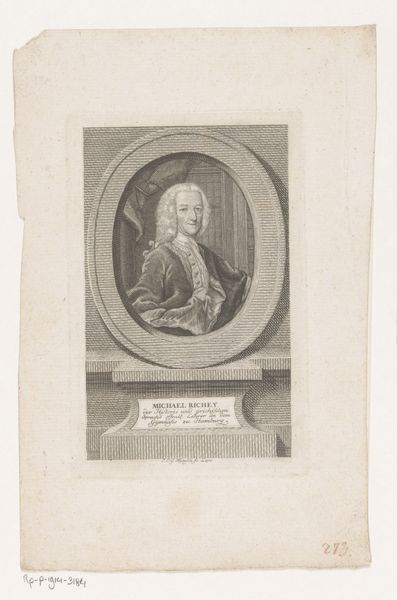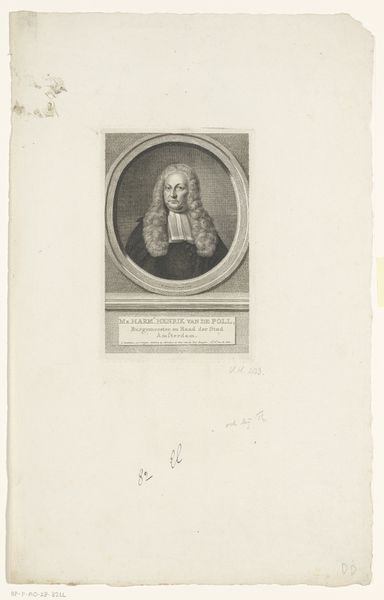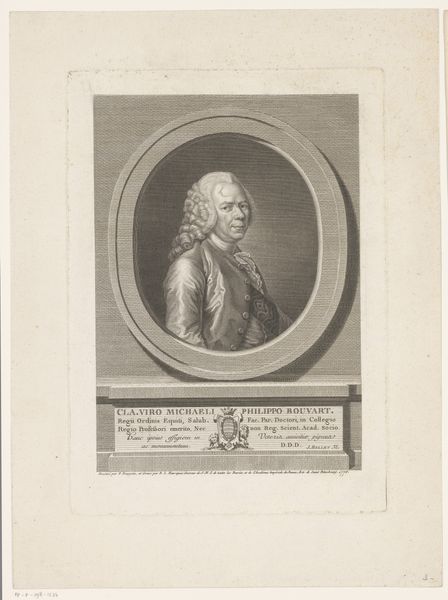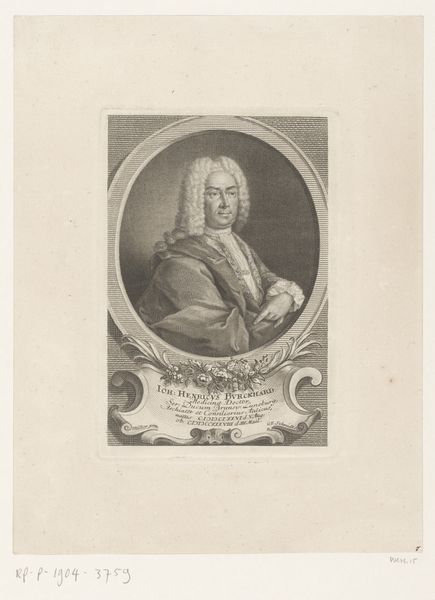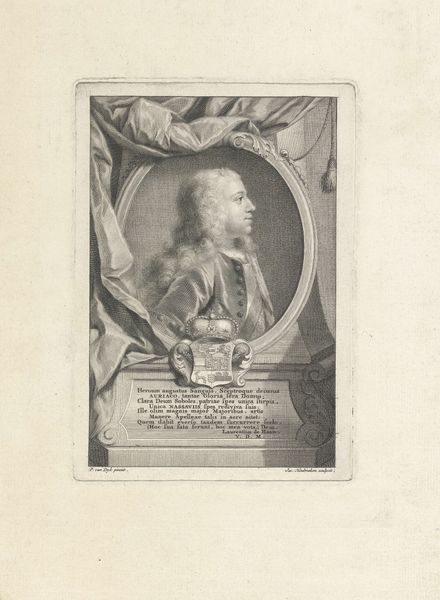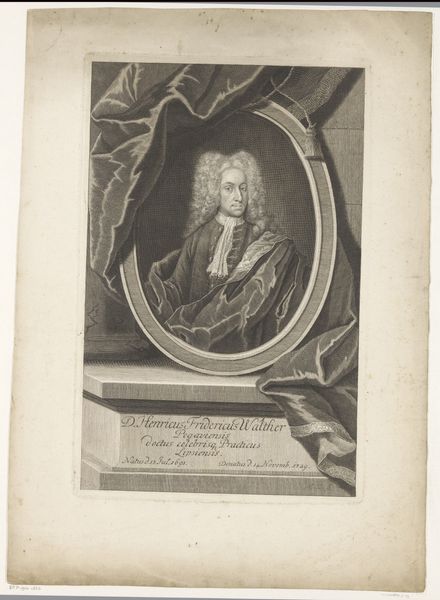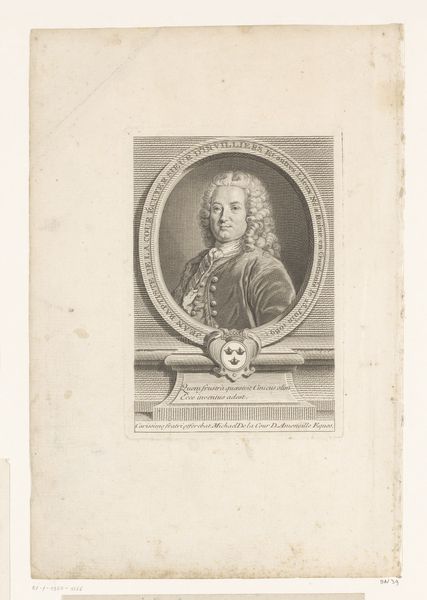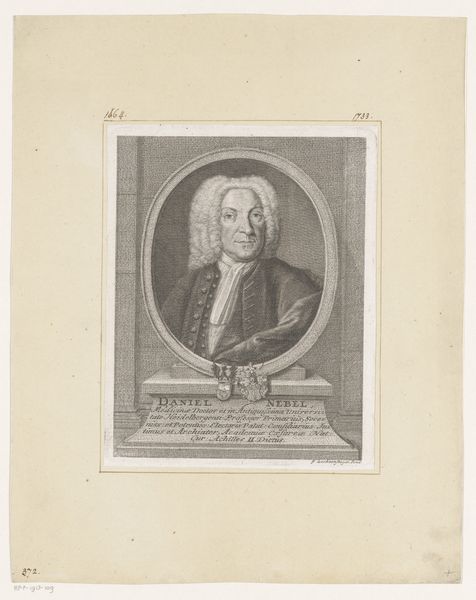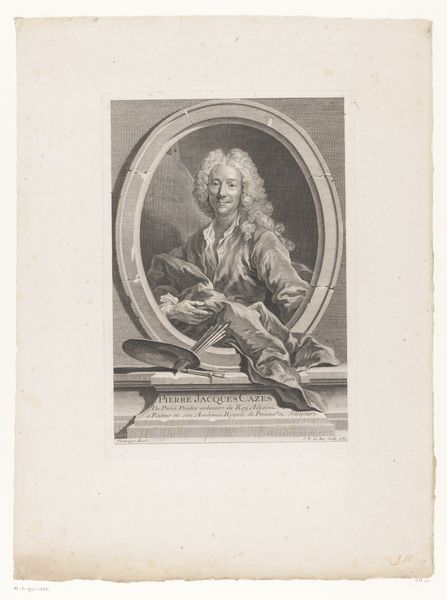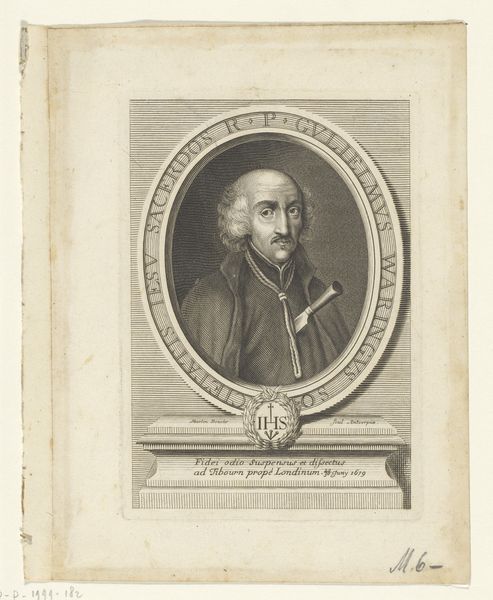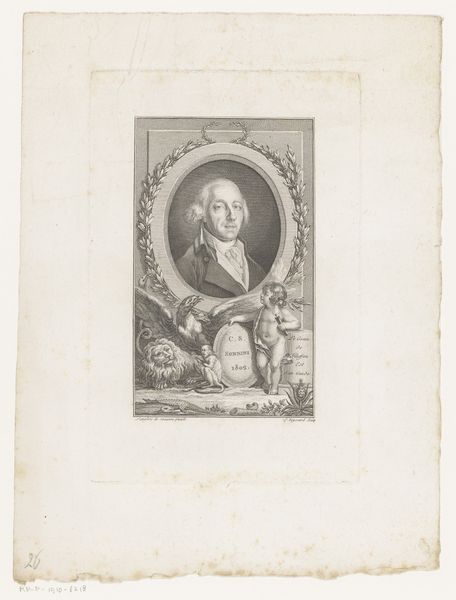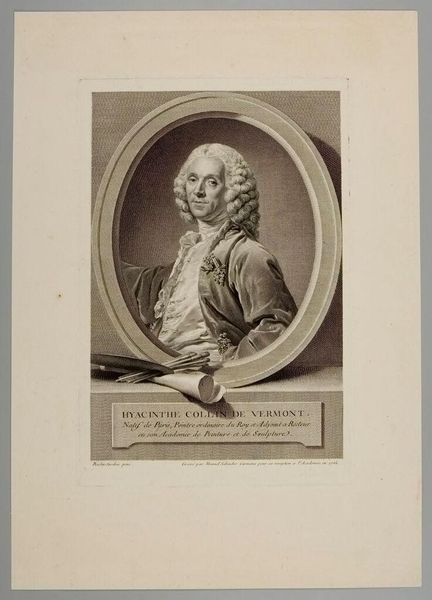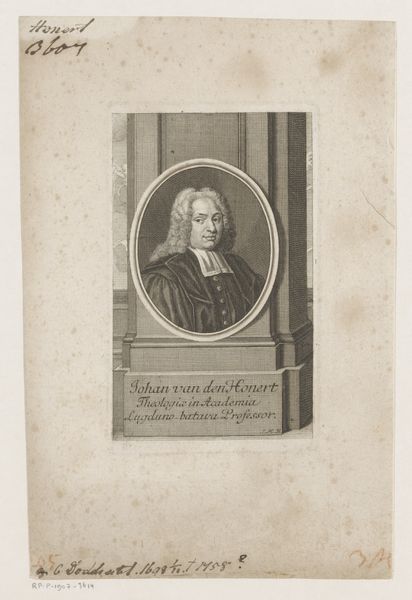
Copyright: CC0 1.0
Editor: Here we have Manuel Salvador Carmona's portrait of Hyacinthe Collin de Vermont. It's striking how the oval frame seems to almost imprison the subject. What do you see in this piece, considering its historical context? Curator: The frame is key. Consider the rise of academies in the 18th century. Portraits like this weren't just likenesses; they were statements of status and belonging within specific artistic and intellectual circles. Who was Collin de Vermont, and why would Carmona depict him this way? Editor: The inscription indicates he was supported by the King and was an adjunct professor of painting and sculpture. So, the portrait served as institutional branding? Curator: Precisely. It's a visual assertion of artistic pedigree and royal patronage, broadcasting Collin de Vermont's position within the power structures of the art world. Editor: I hadn't considered that the portrait itself could be a form of institutional communication. Curator: Art is rarely created in a vacuum. By understanding these contexts, we can unravel the complex social dynamics embedded within seemingly simple images.
Comments
No comments
Be the first to comment and join the conversation on the ultimate creative platform.
